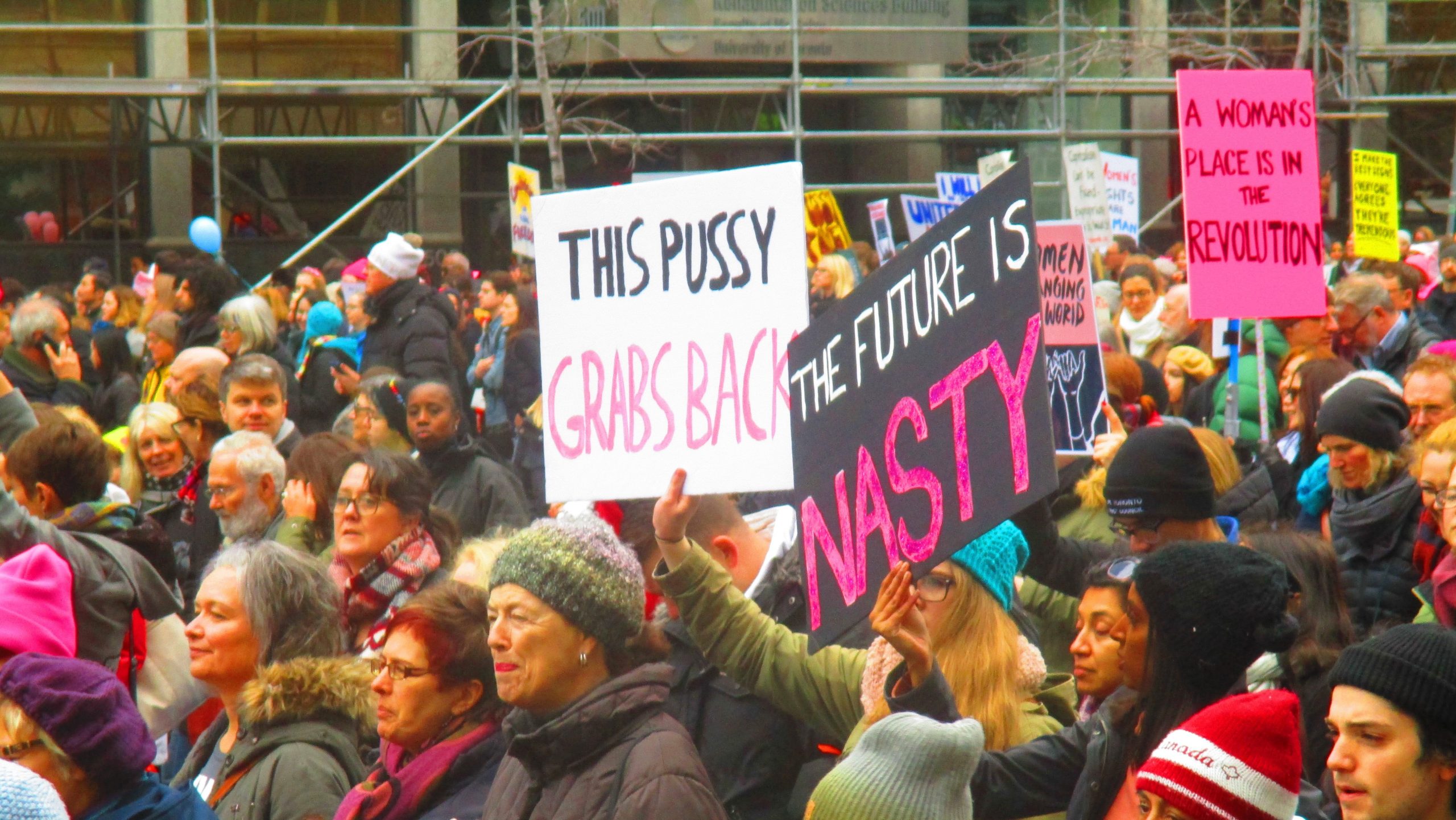Nasty woman. It’s a phrase we all know, first brought to the world’s attention during the final US presidential debate this year by Donald Trump’s use of it in describing his opponent, Hillary Clinton. Likewise, most will know that ‘Nasty Woman’ soon became something of a trademark for feminists everywhere. Through sheer determination, the term was raised from vile degradation to an emblem of feminist activism and thought – but how?
Immediately after the event, a Twitter frenzy ensued, sparking viral hashtags #NastyWoman and #IAmANastyWomanBecause. The topic became so big, growing from what Trump likely regarded as a throwaway remark, that within hours Google Ghost had created a T-Shirt with the phrase surrounded by a great, pink heart, retailing at $25, advertising that all proceeds would be going to Planned Parenthood.
Soon after Trump’s election, protestors took to the streets. Among others, Madonna took to the stand to offer her support of the cause, along with thousands of women and men.
Inevitably, this defiance was condemned by Trump supporters and anti-feminists, who argued that their behaviour was only serving to prove Trump right. One memorable reaction was Piers Morgan’s chiding column in the Daily Mail, describing the march as “a celebration of Women’s Wrongs… nasty women being nasty, whipped into a man-hating frenzy by some very nasty women on a stage… Ladies, I love you. But if you let the nasty women win, you lose”.
Unfortunately, the ladies didn’t seem to love him so much afterwards, with many of his guests on Good Morning Britain expressing their disapproval of his comments; Ewan McGregor even famously cancelled his appearance after realising Morgan was a host.
Eventually, the global art movement Nasty Women was established. They describe on their website www.nastywomenuk.com how they want “to demonstrate solidarity among artists who identify with being a Nasty Woman in the face of threats to roll back women’s rights, individual rights, and abortion rights”.
Last week, Nasty Women UK hosted its first event in Hackney, London: a free art exhibition along with various ticketed talks, music and comedy events in support of End Violence Against Women. The exhibition was designed to showcase the wealth of talent among female artists, and to encourage greater gender equality in the arts; while approximately 60% of art graduates entering into work are female, they represent just 30% of exhibited artworks in the city, indicative of the struggle all women face in the workplace in their fight to be heard.
Over 100 UK and international female artists donated a myriad of artistic works, varying from paintings to sound installations, craft, performance and political baked goods. There was reportedly a Donald Trump cake, which was, presumably, savagely demolished.
The exhibition also boasted a VR experience, replicating the experience of women in public places, demonstrating the ingrained misogyny, normalised harassment, and increased risk of random attacks that women regularly face in public.
From Trump’s garbled verbal abuse has risen a shared need among feminists and women worldwide to show a united front against such unapologetically violent behaviour. With reference to this, Kasia Uscinska, director of Nasty Women UK, in an interview with Huffpost UK explains that while Nasty Women is predominantly a movement of feminine empowerment, still they “aim to raise awareness more generally of issues women and marginalised groups face. This is a movement against intolerance in all its forms… While the focus of our fundraising efforts is going towards women’s charities specifically, we aim to bring together people of all genders, races, faiths and LGBTQIA identities through the platform of the arts”.
While Nasty Women holds up its flag as a feminist force to be reckoned with, at the heart of the movement is a determination to leave nobody behind. Through the great lengths and efforts which the Nasty Women movement and those who identify with them have gone to, the term no longer degrades, but rather elevates. In this way it manages to propagate a culture of understanding and acceptance which seeks to envelope not just women, but anyone who has ever faced prejudice or abuse.
Image: booledozer

